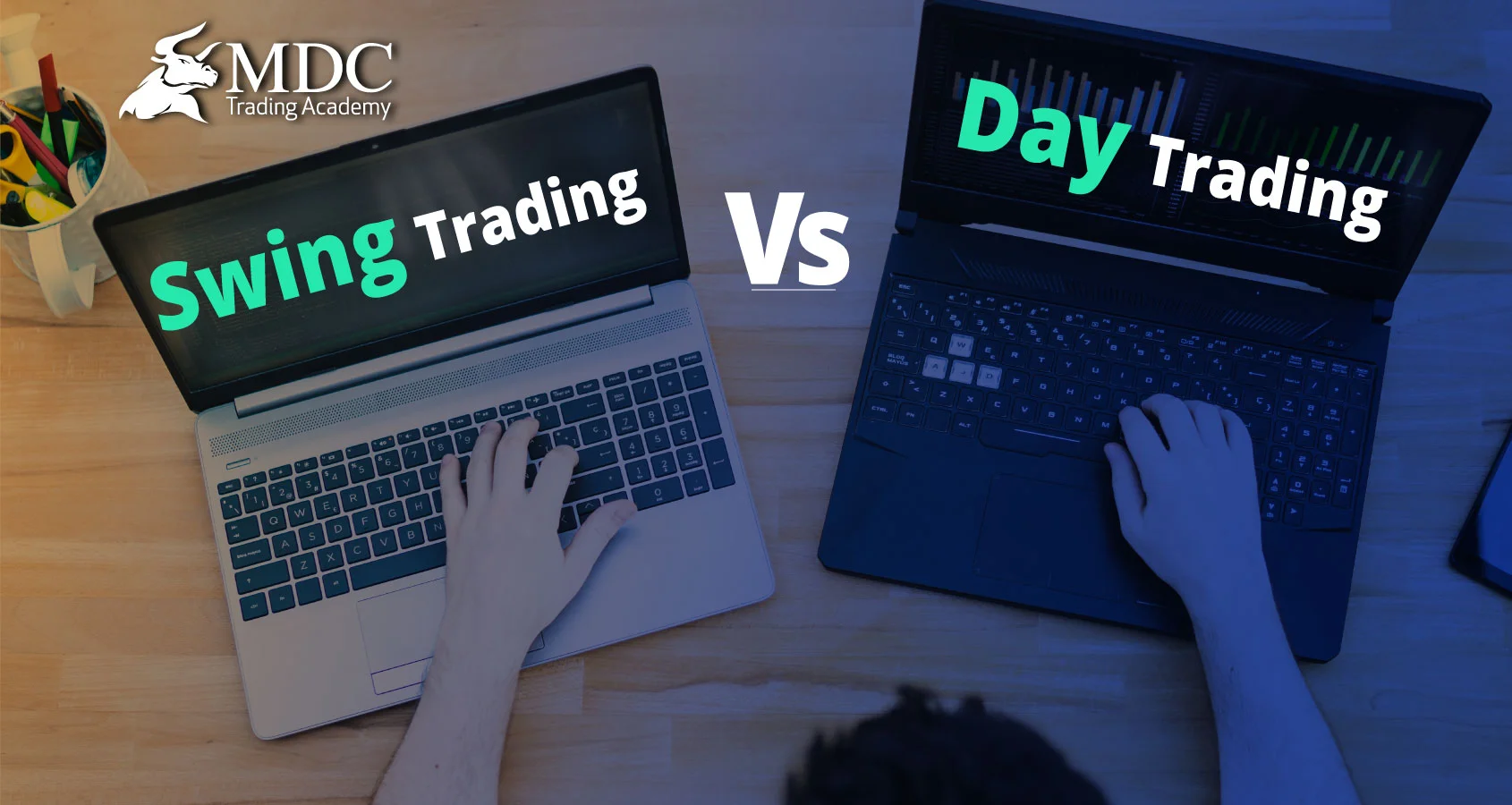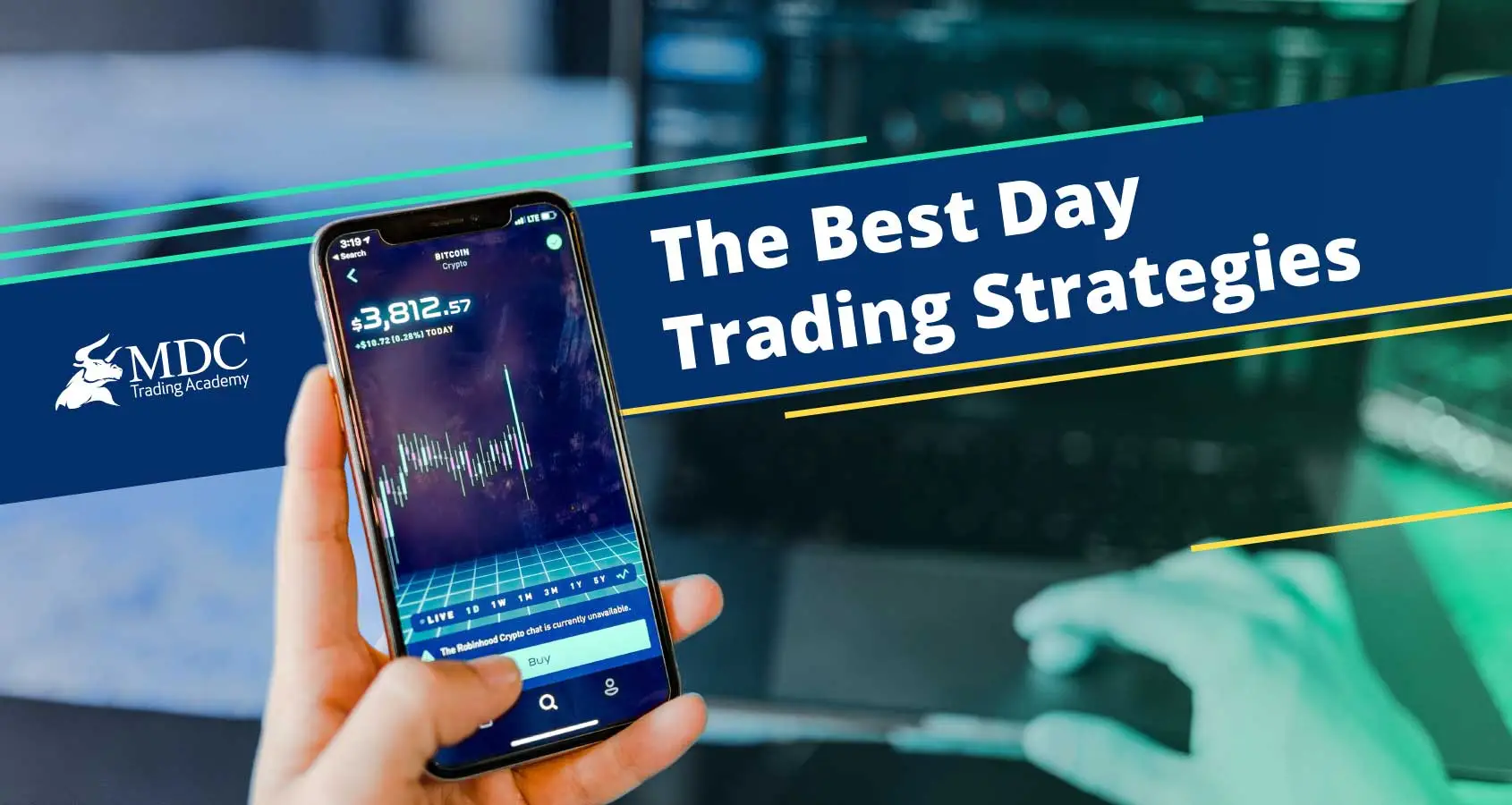Financial trading will give you a number of options for your operations thanks to the many styles available, and you can earn more money with any of them. On this occasion, we will focus on teaching you about Swing Trading, a very effective form to operate the markets.
One of the main characteristics of this style is the time frame you use. Plus, is an excellent introducer for beginners to using technical analysis.
Could this be the right style for you? Let’s find it out. Read our swing trading guide to understand and learn more about it: how to start swing trading, strategies, indicators, best times to apply it, and many other key aspects.
What is Swing Trading?
Swing trading is a financial trading style that consists of buying and selling securities in short periods. Closing a position can take between a couple of days to several weeks. The goal is to hold a position until you find an opportunity to profit from selling your security.
As a Swing Trader, you should rely on technical analysis; this is the study of stock charts to find trends and patterns in the financial asset’s price movements.
Another great tool is technical indicators. Keep reading to know what they are, and how they could help you.
Swing Trading Strategies
Having a strategy is like having a map. It is your guide with all the necessary steps and characteristics you could follow while operating the markets.
Define your strategy according to your profile as an investor. It should include your risk tolerance, time available, market, and securities.
Check out the following three high probability swing trading strategies:
Trend line
Trends are the direction a security’s price follows. It can be upwards or downwards, and it shows past data and helps as a confirmation tool to predict a movement the price may follow in the future.
Using it implies drawing a line in the chart. Your objective is to take advantage of these trends to open positions at a lower price, and then close it when it is higher.
As the period in Swing Trading can be up to a couple of weeks, finding trend lines could be one of the best strategies for beginners.
Support and resistance
Financial assets tend to move up and down constantly, but some levels define the bottom and the top of a price movement. These are known as support and resistance.
- Support is the bottom level of a security’s price range. It is an imaginary line that defines the limit a price can go down.
- Resistance works as a ceiling. It reflects an imaginary line that indicates the highest level a price can reach.
Applying Support and Resistance’s strategy helps you identify the right time to enter or exit positions in your trades. When the price reaches one of the previous levels, it means now may move in the opposite direction.
Moving Average Crossovers
Using moving averages implies two indicators SMA (Simple Moving Average), which calculate the average closing price of a security over 20, 50, 200 days or more.
You should apply this indicator in your chart to find crossovers between short-term and long-term moving averages. These will represent the buying and selling signals.
Still unsure about some basics about trading? Do not worry! At MDC Trading Academy, we have a FREE course for you! Catch up with the necessary trading knowledge and choose the better style.
Best Indicators for Swing Trading
- Fibonacci Retracement: this determines the support and resistance levels. It helps to find the moment a stock price may reverse or stop.
- Bollinger Bands: this indicator creates two lines: one above the simple moving average and the other below. It gives you a broad vision of the volatility of a stock, so it can allow you to find entry and exit points in your trades.
- SMA: the simple moving average is an indicator that calculates the price average of a specific period. It is “moving” because it is updating with the last stock price. Use it to understand better the behavior of the price movements.
- RSI: the Relative Strength Index measures a stock’s momentum, including speed and change in price movements. It helps you to find oversold or overbought stocks.
How to Use Moving Averages for Swing Trading?
The main Moving Averages are SMA (Simple Moving Average) and EMA (Exponential Moving Average). Both calculate the average for a stock price in a specific period, but, EMA puts more weight on the last price, thus it responds quicker to price movements.
You can place them in your chart to understand better the direction the price went based on past prices. The objective is to find which direction may follow according to past trends.
Discover more about EMA and SMA in our article dedicated to this topic. There, you will learn how to calculate them and how to read each.
How to Use Pivot Points in Swing Trading?
Using pivot points relies on support and resistance levels to find enter and exit positions. It can help you to predict an upward trend once the price touches support. Or, if the price reaches a resistance, it can be a signal of a trend going backward.
Best Stocks for Swing Trading
To choose the best stocks you should rely on finding the ones with less volatility in their price. Of course, every financial asset has price changes, but the ones with a steady price action are the best option if you want to apply Swing Trading.
Another essential aspect to consider is liquidity. You can assure this by finding if there exists a high volume of transactions from a specific stock. Liquidity will make it easier for you to find buyers or sellers for your operations.
How to Pick Stocks for Swing Trading
Using an indicator like Beta (β) will help you understand volatility. Many trading platforms such as TradingView allow you to access this information. The values for β mean the following:
- A β of 1 means that the price of a stock moves with the market.
- A β of less than 1 means that the stock is less volatile than the market.
- A β of more than 1 means that the stock is more volatile than the market.
Thus, consider stocks with values between 1 or less when choosing.
As β, you can find information about the volume on trading platforms. This number represents the amount of money circulating into transactions. It shows a high demand for a stock.
Finally, observe companies or financial assets with steady growth. Remember that Swing Trading requires more time than other styles; thus, you need upward trends and other signals of price growth.
Best Time Frame for Swing Trading
As you already know, Swing Trading can take between days or up to a couple of weeks. For this reason, there is a long time to choose when to close a position. Some suggest that opening positions in one day and closing them the next is the way to go. Others think it is better to wait more than a week; so the price can grow over time.
At MDC Trading Academy, we believe it will depend on your available time to operate the markets. Adjust this style according to you and your needs as an investor.
Pros and Cons of Swing Trading
Swing Trading can be very effective for financial trading. Nevertheless, there are pros and cons you should consider while choosing this style:
Pros:
- Not much time commitment: thanks to the time frame, you do not need to analyze your stocks all the time to make decisions.
- It can be very profitable: if a stock follows a trend and increases at a high price, selling it makes more profits than other styles.
- Flexibility to operate: you can close your trades days or weeks later. It means you are not obligated to work every day or many hours a day.
- Requires less experience: usually, many traders choose this style to begin trading because the number of operations is fewer than others.
Cons:
- Market timing is arduous: it can be hard to find trends to jump in. Especially as a beginner, it will take some time to understand the behavior of the market.
- It takes time to profit: because it is a mid-term style, this depends on the price growth over time. Also, as you sell your stocks less frequently, you win money slower than other styles such as Day Trading.
- Less entertaining: if you like to analyze the stock market every day and many hours a day, this style won’t be for you. As the time frame is longer, you do not need to be close to your computer much. Swing Trading is a less exciting style with few movements along your trading sessions.
- Riks for larger losses: as you let growth happen in a stock price over time, a reverse movement can happen too, causing you to lose more money.
How to Learn Swing Trading?
Are you up to how to be a swing trader? First, learn about the basics of Swing Trading, which are technical analysis and indicators. Understand how to interpret them and how they can affect your trading decisions.
Second, you need to find a simulator: NinjaTrader is a great option. There you can do Paper Trading, which is a tool for selling and buying stocks with fake money in the live market. Try to understand how the indicators work in action. Also, use the charts as much as you can to be more familiar with price movements.
Do not neglect the fact that you can make progress using a simulator. To record all your movements, use a trading journal. It is a tool which can help you take notes about your trading sessions and be aware of your improvements.
FAQ
Swing Trading vs Day Trading
Both trading styles can be very effective for operating the financial markets. The main differences between them reside in the duration of the operation, the number of transactions, dedication, risk level, and stress levels.
For a more detailed explanation, I invite you to read our article dedicated to this subject. There you will find a side-by-side comparison.
Difference Between Scalping and Swing Trading
Scalping is a trading style for far more experienced traders. It requires quick decisions and an agile analysis of the markets. The main characteristic of Scalping is that the operations are closed in a matter of seconds up to a few minutes.
You can make more than 100 trades per day while Scalping. Your objective is to accumulate small profits.
On the other hand, Swing Trading has a longer time frame and allows you to analyze the stocks calmer. And, your profits could be less frequent but can be higher.
Is Swing Trading Profitable?
Yes, it is profitable. You should apply the correct strategy and have enough experience. Prioritize the objective of maximizing profit and minimizing losses.
The amount of profit will depend on some factors. For example, the amount of capital you invest, the financial market, and the security, to mention a few.
Is Swing Trading Good for Beginners?
Yes, it is good. Swing Trading can be a style suited for beginners because it is less risky. Also, it can help you to start using technical analysis to comprehend the price movements.
If you are starting in financial trading, consider this approach to operating the markets. It will allow you to get familiar with stock price behavior. Also, you will have enough time to analyze and find selling and buying opportunities.
Is Swing Trading Worth It?
Yes, it is worth it. Even though your profit will depend on the amount of money you invest, your trading strategy, and your expertise.
If you learn and do things correctly, it can be an extra source of income or even your full-time job.
Remember, Swing Trading is a mid-term style; for instance, you can expect to profit in the time frames I described at the beginning of this article.
Can Swing Trading be a Career?
Sure! Any trading style such as Swing Trading, Day Trading, or Scalping can be a full-time profession.
Making a living out of Swing Trading is possible; however, consider that it will require time and commitment as any other profession.
Also, learning about financial trading can be an exciting career because you can learn about how the economics of the world works.
How Long Does it Take to Learn Swing Trading?
It will depend on you: the effort you put into it, the time, and your commitment. It can take you from a couple of months up to years.
As everybody else, you should start with the basics of financial trading. A solid foundation of knowledge will make you continue your journey with ease.
Then, practice in a simulator as much as you need. A tool like this can help you to familiarize yourself with the operation of financial markets and the day a day of a trader.
Keep in mind that a trader never stops learning. There always will be new apps, strategies, or even financial assets. So, keep up learning to be aware of the recent technology, and to take advantage of the emerging opportunities.
How Much Money do I Need to Start Swing Trading?
It will vary from person to person. Nevertheless, consider the amount of capital available you can invest. It should be money you could afford to lose; so you do not affect your financial health.
Take into account the minimum deposit required by the broker. And finally, it will also depend on your objectives and needs as a trader.
According to Business Insider, you can start with $5k-$10k or less money. But as I told you, it can vary depending on the anterior factors.
How to Find Momentum Stocks for Swing Trading?
Momentum is the strength in the movements of a stock. Because Swing Trading requires a time of days or a couple of weeks, the volatility may not be high. It means that the price does not vary much in short periods.
For instance, the objective is to find stocks with enough force in their movement to continue going in the same direction. Then, when it reaches a peak price, sell it to profit.

Manny Cabrera
Stock Market investor since 1990. Professional futures trader since 2008. Finance Specialist and Systems Engineer; he worked for more than nine years on Wall Street. Head Trader and Co-Founder of MDC Capital Group with vast experience mentoring traders. Architect and designer of the MDC methodology. His passion is to transform lives through trading.







